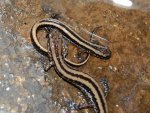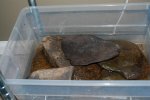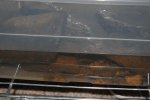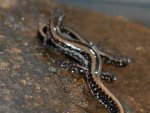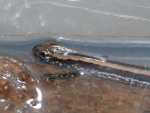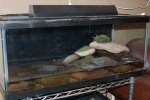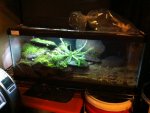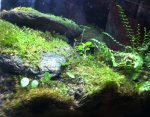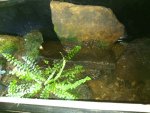E. guttolineata can often be found in the same streams as
E. cirrigera, at least in Mississippi they can. So it may be worthwhile to look at breeding set ups for
E. cirrigera and work from there. I've seen multiple
E. cirrigera set ups on this site, and they tend to have running water with stacks of rocks and or slate. The
E. cirrigera will oviposit on the lower surface of rocks that are submerged in the water. You may want to prop a few pieces up so that they can get under them to do that. Moss is always a good addition.
We don't have much rock in streams in my part of the state, so breeding habitat looks pretty different. Females will apparently oviposit beneath driftwood, or beneath low hanging moss or in leaf litter in the creek.
E. guttolineata are also found in association with lentic water (swampy ponds).
Oh, and sexing
Eurycea is relatively easy during the breeding season (which comes to a close in March or April in my region). Males will have cirri, which are fleshy projections that grow down from their nostrils and overhang their lower jaws. If you see those, you know it's male. However, sometimes these are not very long or prominent, depending on how much testosterone is going through the animal at the time. Fortunately, males also grow enlarged premaxillary teeth (teeth on the upper jaw at the very front), which you can usually feel if you gently rub your finger against the lower tip of their snout. It will feel like sandpaper. They'll also have a small mental gland (portion of slightly raised, slightly lighter skin at the apex of their lower jaw), which you can sometimes see. In the field, I generally rely on cirri and or premaxillary teeth. Below I've linked a diagram in which you can see the approximate position of the gland and their teeth. The drawing on top depicts the premaxillary teeth growing through the lower jaw.
http://people.oregonstate.edu/~arnoldst/eurycea.jpg

